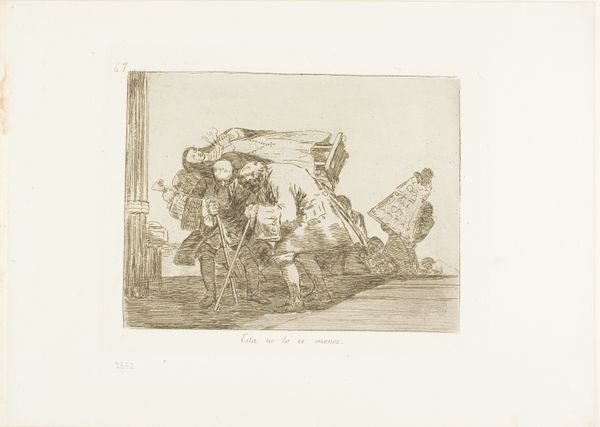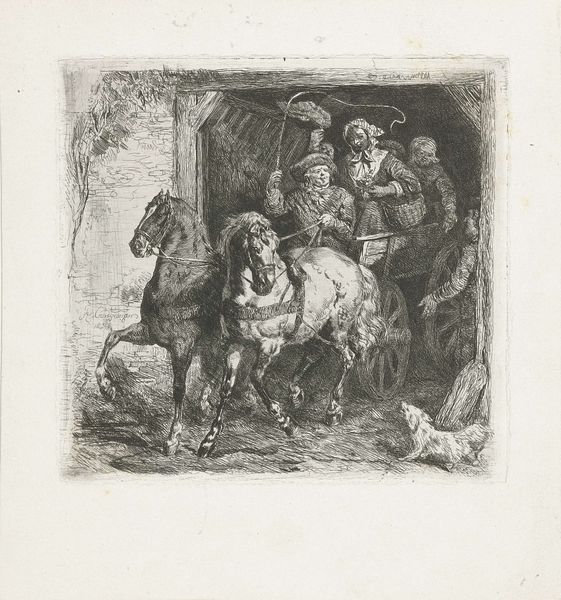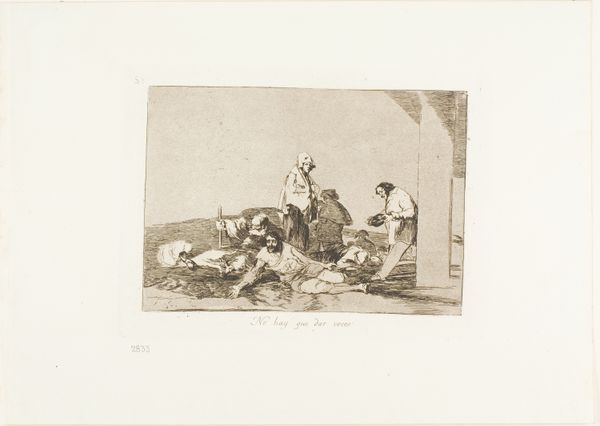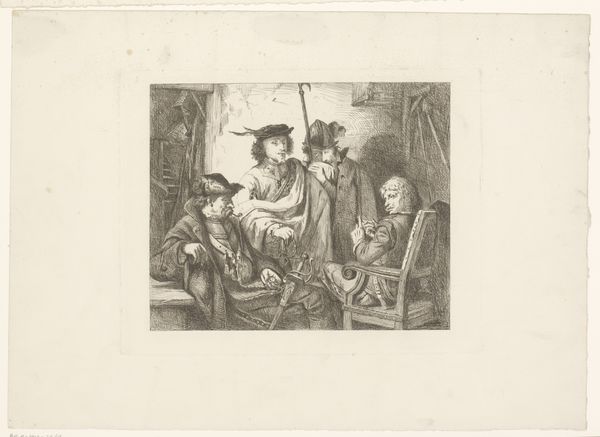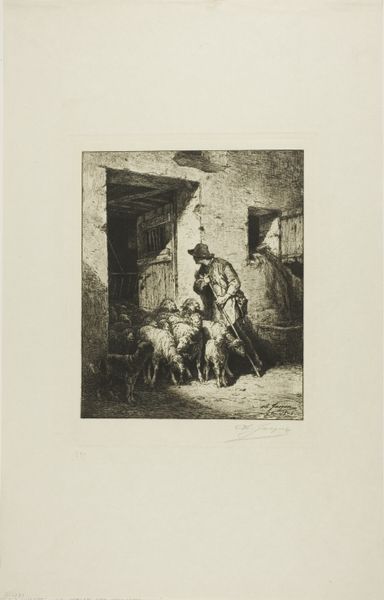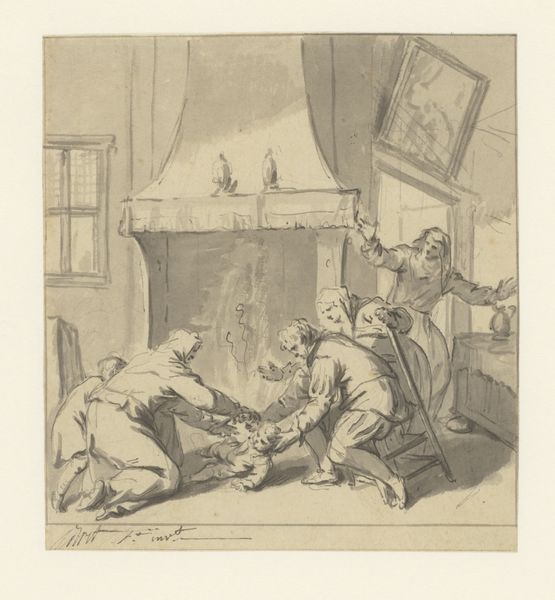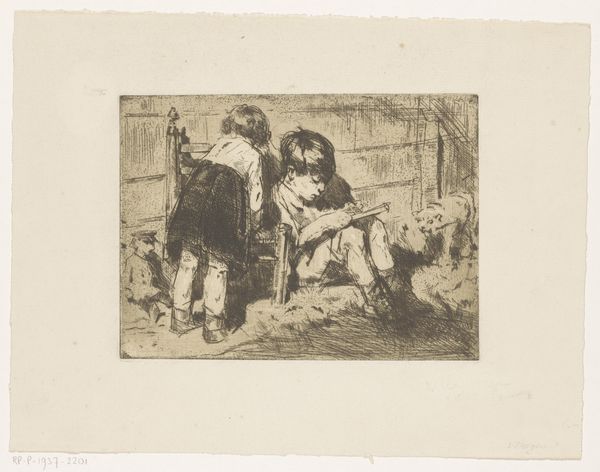
Dimensions: height 123 mm, width 130 mm
Copyright: Rijks Museum: Open Domain
Curator: Let's take a moment to consider Guillaume Joseph Vertommen's "Interior with Four Drinking Men." This print, created sometime between 1825 and 1863, presents us with an intimate tavern scene. Editor: The first thing that strikes me is the energy. Even in the delicate etching, you can feel the boisterous camaraderie and perhaps, the recklessness of the moment. There’s a potent immediacy, isn’t there? Curator: Absolutely. Looking at it through the lens of social history, it offers a glimpse into the male-dominated social spaces of the time. We could think about questions of access, class, and even performative masculinity evident in this tableau. What kind of roles do these individuals have? Is their masculinity intertwined with social status? How might different intersectional narratives be placed into it? Editor: My eye is drawn to the man in the center, flailing. His tankard hoisted high and wide, in what feels like a gesture lifted straight from a Bacchic revelry. Vertommen seems keen on depicting human drama, through those carefully chosen signifiers of inebriation. Note, for instance, the scattered items on the floor—playing cards, an empty vessel. Those are all important aspects of its symbolic vocabulary. Curator: Precisely, and that's crucial. In examining the Baroque influence, and situating the artist within this longer tradition, we start to understand how the piece may or may not depart from it, while maintaining some visual motifs that relate directly to earlier pieces about taverns and the working class. This adds layers to its intended meaning, considering its social context. Editor: I also wonder about the single musician. Consider how frequently music becomes synonymous with loosening of inhibitions across cultures and ages. Does Vertommen deliberately deploy musicality here as another hint to cultural association? Curator: These pieces are never isolated but, as a reflection, it reveals both social changes, but perhaps also some continuities when related to how masculinity or alcohol consumption and even artistry function in the present, which can be somewhat troublesome if viewed with that critical lens. Editor: Vertommen provides us, after all, more than mere documentation—we gain the enduring echoes of human behaviors, visualized, translated for another time. It provides such enduring questions of cultural and emotional symbols, even as culture is a changing space.
Comments
No comments
Be the first to comment and join the conversation on the ultimate creative platform.

